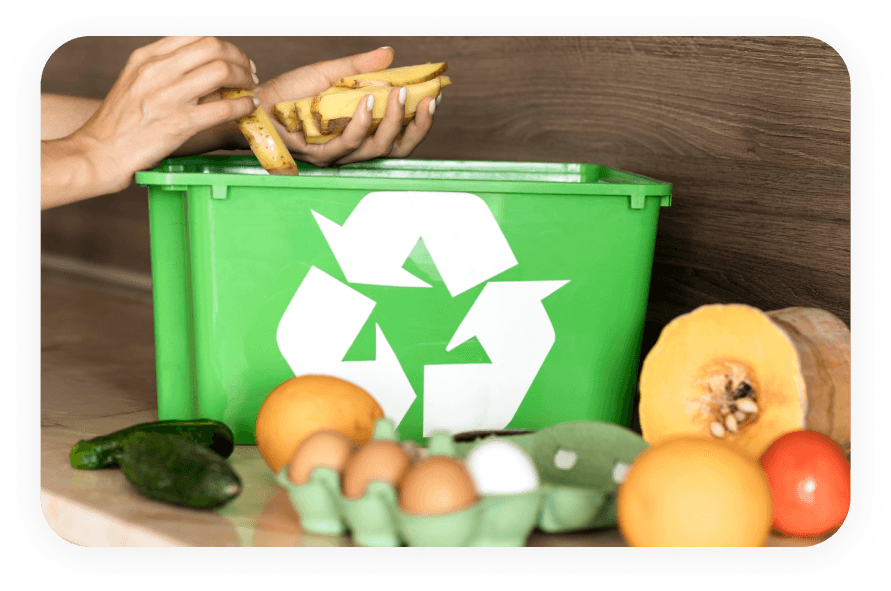Food Waste Facts
About Food Waste
Food waste is a significant global issue. By understanding its scale and impact, we can work together to make a meaningful difference. Let's explore the facts and statistics surrounding food waste.

HOW MUCH FOOD IS WASTED GLOBALLY?
According to WWF (2021), 40% of the food that we produce globally goes to waste. This means that 2.5 billion tonnes of food is wasted every year. This equates to 80,000 kilograms of food being wasted around the world, every single second.THE BIGGEST FOOD WASTE CULPRITS
Fresh produce like vegetables and fruits top the global list of wasted food. Grains and cereals come next, then dairy, eggs, and meat.Wasting these foods doesn't only cost money it also means wasted farmland, fuel, and water, and adds to greenhouse gases when it ends up in landfills.

What We Mean by Food Waste
Food waste covers any food made for people to eat but thrown away instead anywhere along its journey from farm to table.It includes food loss, which happens during farming, processing, and transport, and food waste, which takes place in stores, restaurants, or at home.
Understanding Surplus Food
Surplus food can arise anywhere along the journey from farm to table.Although it isn't waste by nature, it's often thrown away. In most cases, this food is still safe and good to eat but won't be sold or used for reasons like overproduction or short shelf life. Making use of surplus food is an essential way to cut down on overall food waste.why is food waste a problem?
Food waste has an enormous impact on society, the economy and the environment. As such, reducing food waste presents a powerful opportunity to make a positive impact on climate change, the cost of living, and food accessibility.
10%
of all greenhouse gas emissions worldwide
are caused by food waste(WWF, 2024)
25%
of freshwater used annually
goes into food that ultimately goes to waste(WWF, 2024)
11.5%
of all land in the world
is used annually to produce food that ultimately goes to waste. In total, this corresponds to a land area larger than China(WWF, 2024)
$1.1
TRILLION
is the amount of money lost through food waste every year(WWF, 2024)
2.4
billion people
do not have access to adequate, nutritious food(FAO, 2023)
783
million people
are affected by hunger every day (FAO, 2023)The Environmental Cost of Wasting Food
Growing and producing food releases greenhouse gases and puts pressure on ecosystems. Agriculture can drive deforestation, biodiversity loss, and water scarcity. When edible food is thrown away, all the energy, land, and resources behind it are wasted too. This means food waste doesn't just fill up bins, it worsens climate change and harms the planet's natural balance.
Why Cutting Food Waste Matters
Reducing food waste protects the planet by lowering greenhouse gases and saving precious resources like water and farmland. Every meal rescued with Value Food avoids about 2.7 kg of CO₂e emissions, saves 810 litres of water, and spares 2.8 m² of land each year.
When we stop good food from going to waste, we create three major environmental gains:


